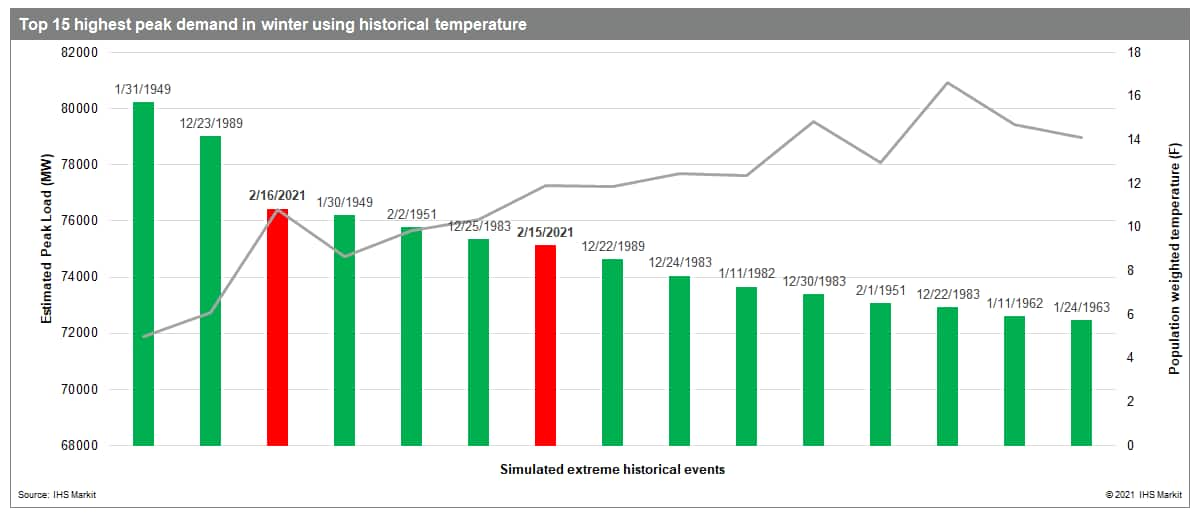ERCOT power crisis: Putting the February 2021 winter weather in historical context
Severe winter weather led to the near collapse of the power grid in the Electric Reliability Council of Texas (ERCOT) region in mid-February 2021. In the weeks following the crisis, much of the public focus has been on the unplanned power plant outages and fuel supply problems that contributed to the extended blackout. Less has been written about the soaring electricity demand that was poised to exceed the grid operator's extreme planning scenario by more than 10 GW (had load curtailment not been initiated).
The February 2021 weather in Texas was extreme, but not unprecedented. A review of historical temperature data for Texas suggests that the February 2021 winter weather ranks behind both 1949 and 1989 in terms of severity. In terms of duration of extreme temperatures, the 1983 winter had ten consecutive extremely cold days compared to two days in 2021. When factoring in both magnitude and duration of the extreme events, four other events (1949, 1951, 1983, 1989) show similar winter weather conditions. This makes the frequency of a February 2021-type event once in every 14-35 years, based on historical data.
Putting weather events like these in context is important when planning for the future. In 2011, ERCOT suffered through severe winter weather that resulted in soaring electricity demand, power plant outages and, ultimately, rolling blackouts. In constructing an extreme winter scenario for 2020/21, ERCOT harkened back to the most challenging winter conditions many could recall—the 2011 winter. Yet, when icy conditions rolled over Texas in mid-February 2021, demand was surging toward 74,496 MW—well above the 'extreme' scenario based on 2011 temperatures.
Put in its proper historical context, weather conditions in Texas in February 2011 were not extreme. Our analysis suggests that there were more than 15 winters with lower temperatures than those experienced in 2011.[1] This analysis highlights the value of using the full extent of historical information to appropriately represent extreme scenarios. This is significant because many market participants look to ERCOT's extreme weather analysis when evaluating new resource decisions and/or planned maintenance schedules within the energy-only market construct.
Understanding the implications of rare, but not unprecedented, weather conditions on electricity demand (and power plant outages) should be a critical input into investment decisions in all power markets and especially so in an energy-only market like ERCOT. With the likelihood that extreme weather events will become more frequent and more severe as climate change progresses, it would seem prudent to at least stress test power systems against the most severe historical weather events that have occurred.

To learn more about our North American gas research and analysis, visit our North American Regional Integrated Energy service page.
Yufei Su, Ph.D., Consulting Principal with the Climate and Sustainability group at IHS Markit, contributes to North American power research and consulting, including power market simulation, price forecasting, renewable power, and the role of climate change in altering wholesale power markets.
Barclay Gibbs, Executive Director, leads North American power analytics at IHS Markit, advising on power economics, due diligence, wholesale power price forecasting, and environmental/climate policy.
Douglas Giuffre, senior director at IHS Markit, leads the North American power markets analysis team, with expertise in supply and demand forecasting, demand response, and capacity markets.
Posted on 12 March 2021.
[1] Metric for judging the severity of winter is based on IHS Markit's demand simulation.
This article was published by S&P Global Commodity Insights and not by S&P Global Ratings, which is a separately managed division of S&P Global.

